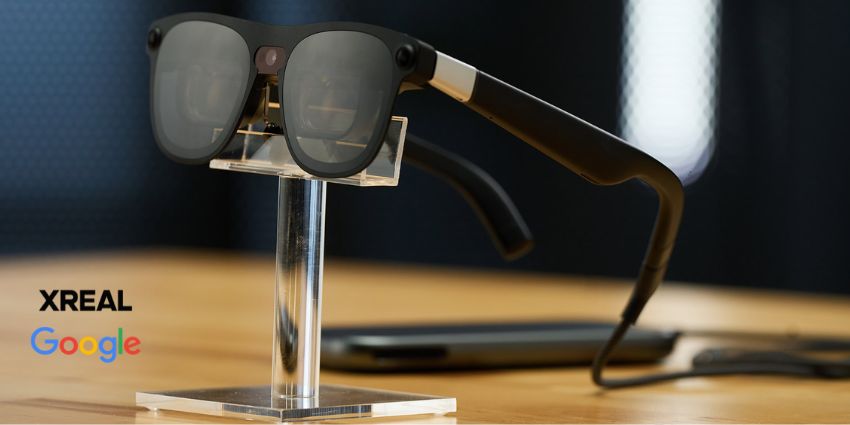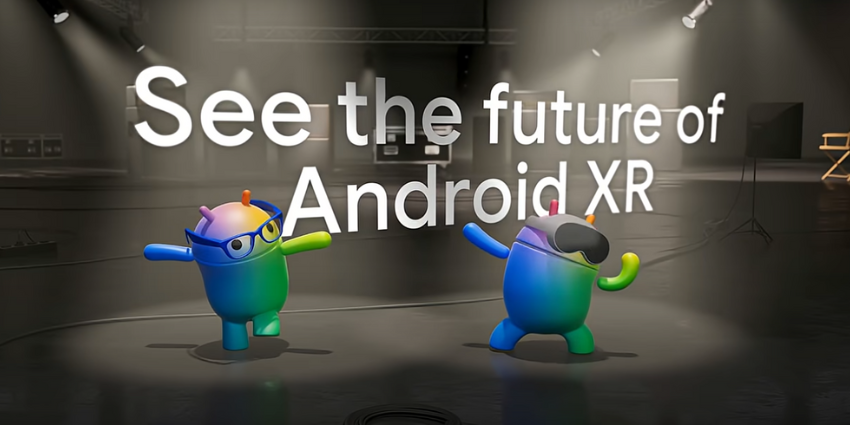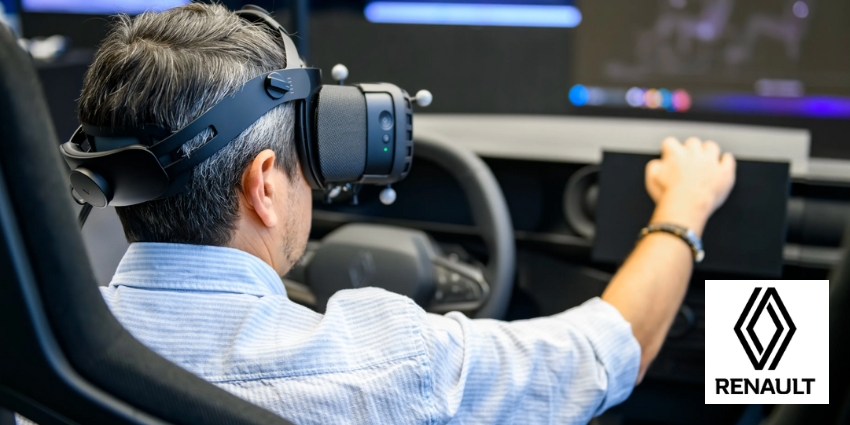The extended reality landscape is transforming faster than ever, thanks to increasing worldwide adoption, advancing technology, and enhanced accessibility. While “tracking” technologies aren’t new in this landscape, new eye and hand-tracking trends are emerging as we move towards a new future of immersive, spatial computing.
Embedding cutting-edge tracking technologies into sensors, headsets, and accompanying XR accessories opens the door to richer experiences in the immersive landscape. These technologies enhance user experiences, by removing the need for controllers and allowing users to interact with content more naturally.
What’s more, they can provide XR software systems with more of the data they need to customize and enhance immersive experiences for each individual user. Here are some of the major trends worth watching in the eye and hand-tracking space today.
1. Advanced Spatial Computing Experiences
Eye and hand-tracking solutions use spatial computing concepts to make interacting with computer systems more natural and intuitive. In the past, many virtual reality headsets, such as the Meta Quest 2, relied heavily on controllers to allow users to navigate virtual environments.
Now, however, we’re seeing an increase in the number of vendors completely eliminating controllers from their technology. Devices like the Apple Vision Pro don’t depend on controller input; they use intelligent inside-out tracking to monitor everything from body movements, gestures, and eyes to the outside world and surrounding content.
Intelligent systems can use infrared beams, cameras, sensors, and other technologies to map an entire environment in seconds, allowing for more powerful mixed-reality experiences that combine the virtual and physical worlds. These solutions can also leverage hand and eye-tracking capabilities to make users feel like they’re genuinely moving around and interacting with a space.
Combined with haptic technologies, eye and hand-tracking solutions can even bring the sense of touch into the XR space, translating interactions with “virtual content” into physical experiences.
2. AI Enhances Eye and Hand Tracking Technologies
Artificial intelligence and extended reality often go hand-in-hand. In the world of eye and hand tracking trends, advancements in AI are paving the way to more robust data analysis and better user experiences on a massive scale.
The latest cutting-edge AI algorithms, such as multi-modal generative AI systems, can process huge amounts of audio and visual data in real time, using them to shape and enhance user experiences in XR. Powerful systems enabled with computer vision can capture more information about a user than ever before.
Instead of just tracking basic hand gestures, for instance, Ultraleap’s technologies can pinpoint the exact movement of each finger, joint by joint. Many vendors are even working on tracking systems that leverage AI to monitor and understand everything from body language to facial expressions.
Plus, AI is already improving the performance of XR technologies with eye and hand tracking in other ways. For instance, systems using foveated rendering algorithms can focus on rendering the content most relevant to the user based on their gaze. This reduces the need for excess processing power and computing resources in extended reality.
3. Increasing Focus on Comfort
Integarting eye and hand tracking technologies into extended reality solutions doesn’t just make the user experience more intuitive, it can increase comfort too.
Using gestures and gaze to navigate an environment is often easier for individuals with disabilities and chronic conditions than interacting with a controller. Foveated rendering can also reduce the risk of VR sickness by ensuring that images are loaded crisply and cleanly in the center of our vision.
Additionally, many vendors in the XR space are leveraging eye tracking as a way to help users customize their XR experience. For instance, a modern headset created by Varjo could scan an person’s eyes and automatically adjust IPD elements in the headset to improve visual clarity.
On a broader scale, eye-tracking and hand-tracking solutions give innovators insights into valuable user data they can use to create more comfortable, ergonomic devices and applications that feel natural and easy to interact with.
4. Eye and Hand Tracking Influences Avatars
Avatars are becoming an increasingly common way for people to represent themselves in the digital world. In collaborative meetings, both in metaverse environments like Microsoft Teams Immersive Spaces, and on channels like Zoom, teams are using avatars to represent themselves.
To ensure these avatars represent a person as realistically as possible, innovators are using eye and hand tracking capabilities to make avatars more “human”. Already Apple uses tracking and sensors to allow users to create “personas” that look more like them. Additionally, in immersive environments, eye and hand-tracking tech ensure that avatars can replicate the actions of a human being.
High-quality sensors and cameras can capture every movement of a person’s hands or face, allowing them to communicate with gestures or convey facial expressions. This can lead to a deeper level of immersion and emotional connection between people in a collaborative environment.
It could also lead to the creation of more “realistic” and “human” virtual assistants designed to assist customers in the metaverse.
5. Greater Accessibility and Customization
In the past, leveraging the latest cutting-edge technologies in extended reality hasn’t always been easy for business leaders. Fortunately, various companies are beginning to recognize the value that XR offers the enterprise and are looking for ways to make their innovations more accessible.
We’ve seen the rise of metaverse as a service environments in the last couple of years, that allow people to build their own immersive spaces without code. Additionally, vendors innovating in the eye and hand-tracking software landscape are opening access to their APIs and SDKs, allowing anyone to implement immersive features into new applications.
These innovations, combined with enhanced connectivity solutions like 5G, edge computing, and cloud environments specifically designed for extended reality, are opening the door to wider adoption. Increasingly, more companies are unlocking the opportunities offered by hand tracking, eye tracking, and extended reality.
6. Use Cases Continue to Evolve
Finally, the use cases for eye and hand-tracking technology are evolving rapidly, too. In the past, these technologies were primarily seen as a way to improve user experiences in extended reality. While they can still achieve that goal, they can also serve various additional purposes.
Gaze interaction technologies are improving the lives of people with disabilities and allowing people to navigate systems with nothing but their eyes. Hand-tracking solutions are helping to pave the way for better rehabilitation strategies in the medical landscape.
Some companies are even using eye-tracking technologies to improve security in the metaverse and leverage biometrics’ potential for user authentication. Companies in all sectors are also using eye- and hand-tracking technologies to improve training and collaboration experiences.
These tools can help organizations to design more immersive training and development experiences that enhance muscle memory and knowledge retention. They can empower teams to access hands-free guidance and support while working on complex projects. For instance, with gaze recognition tools, an engineer can scan through user manual pages while working on a task.
Keeping Up with Eye and Hand Tracking Trends
Eye and hand-tracking technologies significantly impact the future of extended reality, allowing us to leverage the full potential of spatial computing. As demand for spatial experiences continues to grow and innovations in AI and sensor technology evolve, we can expect to see ever more intuitive solutions in our headsets and accessories.
One day, eye and hand-tracking technologies could remove the need for controllers connected to XR headsets and make immersive experiences more accessible to everyone.






